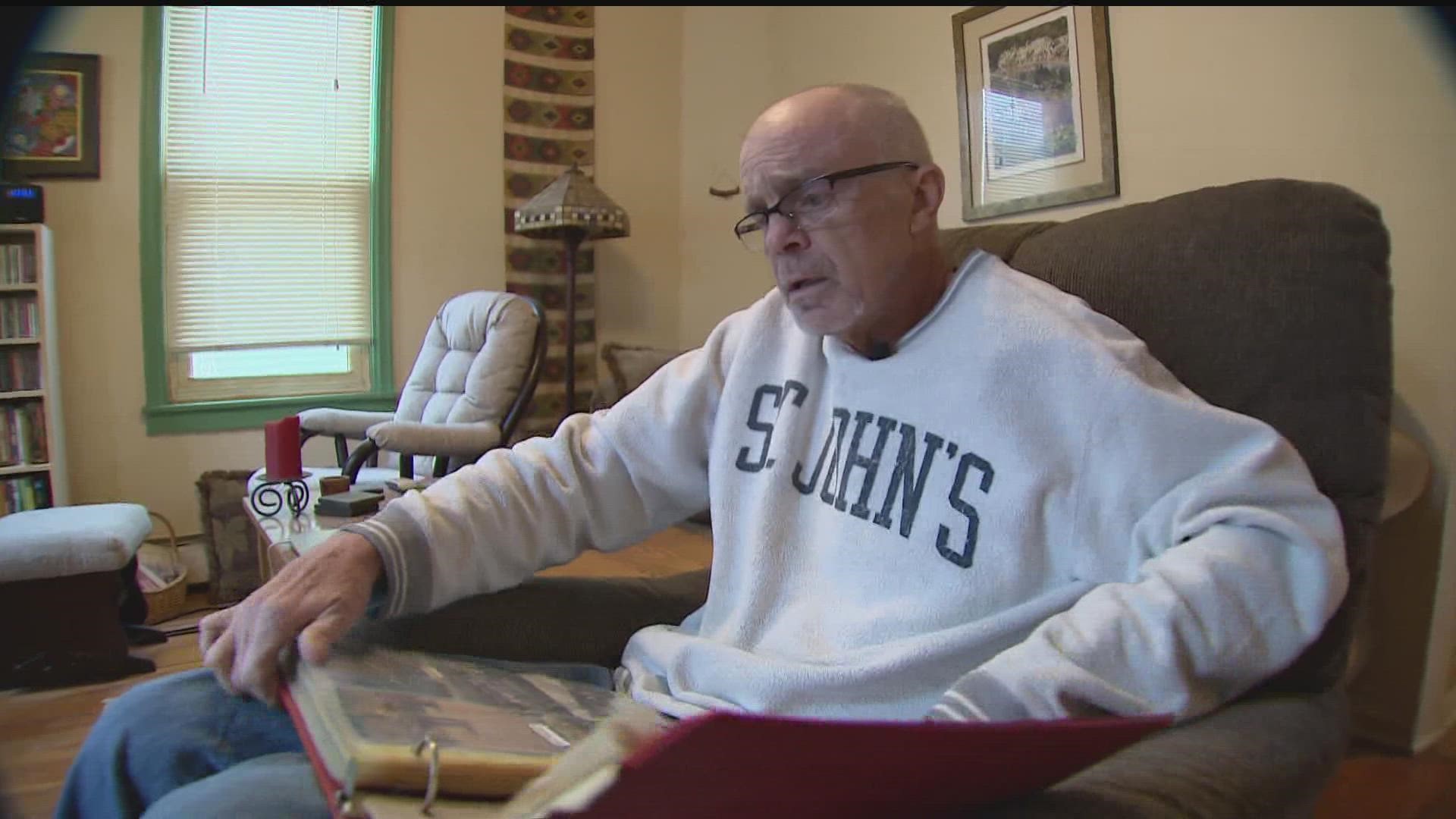ST. LOUIS PARK, Minn. — A retired math teacher is lucky to be alive after he collapsed and hit his head.
But that's not what nearly killed him.
Daniel Bowler was diagnosed with a pulmonary embolism, or a blood clot, in his lung on March 15.
The 60-year-old was back at Benilde-St. Margaret's for a student pizza party when he remembers falling, seemingly out of the blue.
"Even five minutes prior, I had no symptoms," said Bowler, who recently retired from teaching after 35 years. "This hasn’t been the dream retirement so far; we’re looking for better days."
Thanks to diagnostic ultrasound technology, the paramedics who responded immediately identified Bowler's blood clot. All it uses is an iPad and a probe and right now, it's only in a select few Hennepin EMS ambulances.
"I think it’s the future of EMS that we have this on every single ambulance," said paramedic Seth Bravinder, who discovered Bowler's clot. "His right ventricle was way larger than it should have been."
Bravinder says the ultrasound technology showcases the specific problem immediately; without it, a diagnosis can otherwise be a guessing game and when it comes to treating blood clots, time is of the essence.
"Speed is the most important factor because it’s one of the true times in his (Bowler's) case where minutes truly mattered," said Bravinder.
Blood clots are hard to diagnose and can look like a lot of things, but symptoms include shortness of breath, chest pain and dizziness.
“Ultrasound is being done for more and more indications,” explains emergency physician Dr. Aaron Robinson. “We’re actively training up paramedics to use it for trauma and medical emergencies – as exemplified in this case. Our paramedics are highly skilled in prehospital care, but they continue to sharpen their skills to provide the best care possible for their patients.”
Bowler would spend two days in the intensive care unit at HCMC, a hospital specializing in this emergency care. He's now on the mend, hopeful to get his retirement back on track.
"I just need to get more exercise like biking and walking, doing some hiking, getting outside a lot more," he said. "I can only go up from here."
Watch more local news:
Watch the latest local news from the Twin Cities in our YouTube playlist:

